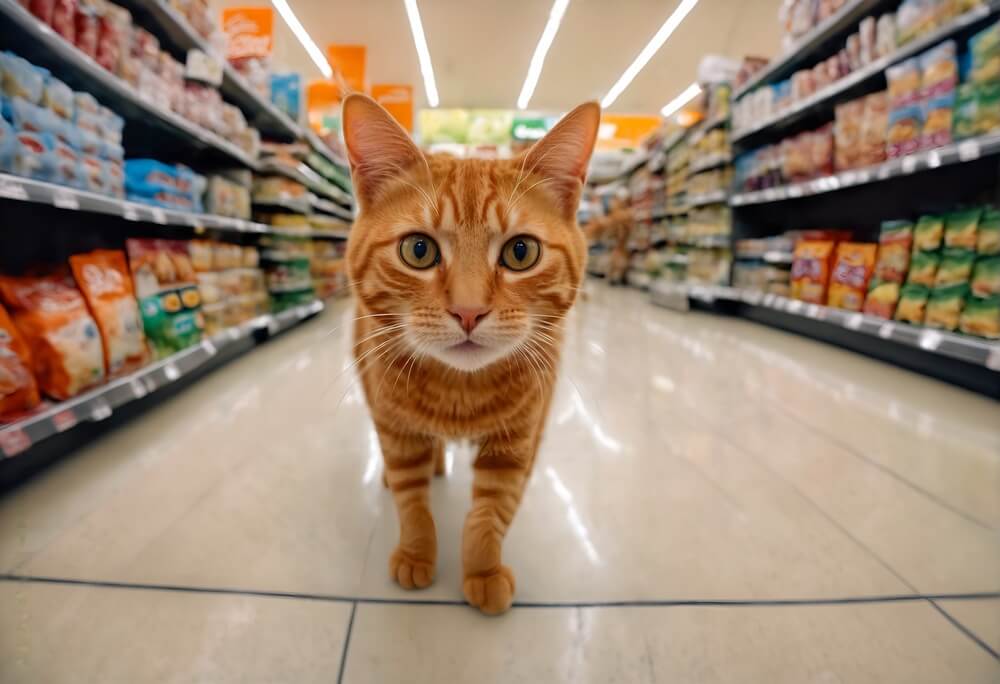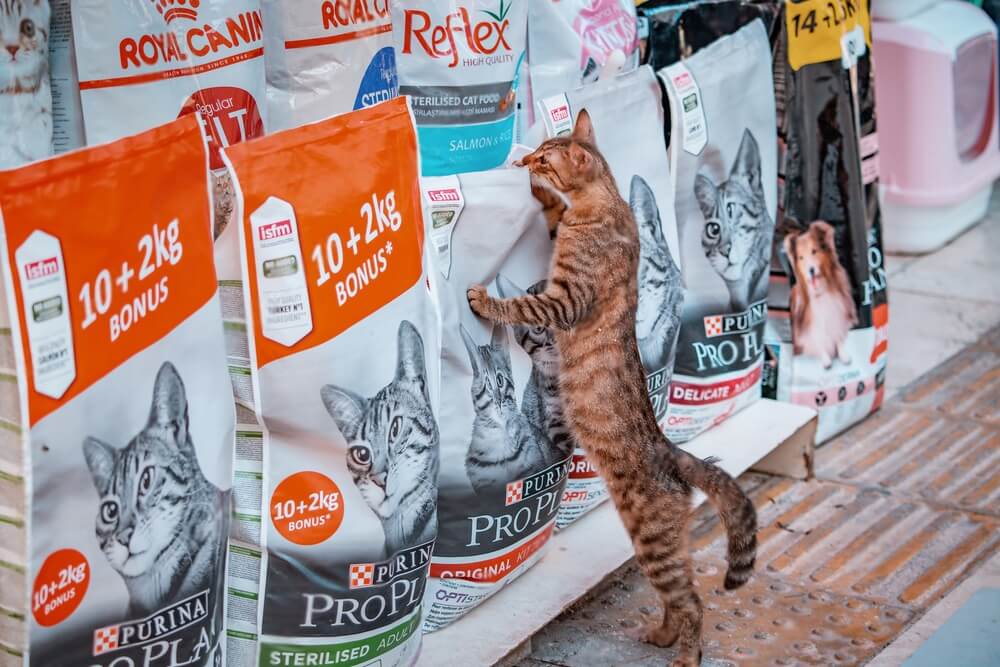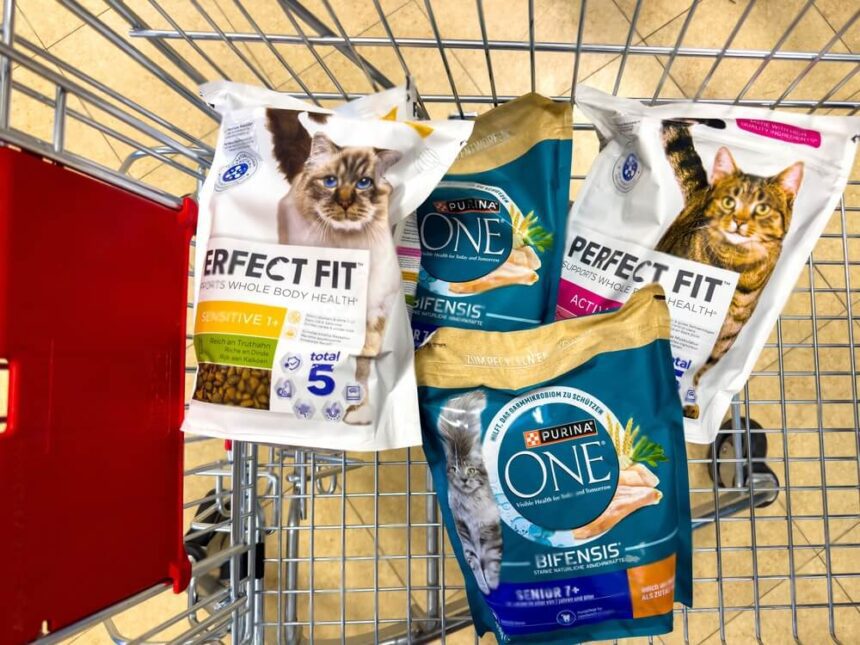Changing your cat’s food brand can feel like a daunting task, but it’s something that most cat owners will need to do at some point. Whether you’re switching for health reasons, personal preference, or simply because your usual brand is out of stock, it’s important to make the transition as smooth as possible for your feline friend. Here’s everything you need to know about how to change cat food brands without causing any problems.
Why Change Cat Food Brands?
Before diving into the how, let’s talk about the why. There are several reasons why you might consider switching your cat’s food:
Health Concerns
Maybe your vet has recommended a special diet due to health issues like allergies, obesity, or digestive problems. A change might be necessary to meet your cat’s specific dietary needs.
Quality of Ingredients
You’ve done your homework and realized there’s better quality food out there. Perhaps the new brand has a higher protein content, fewer fillers, or more natural ingredients.
Availability
Sometimes, it’s as simple as the store not having your usual brand in stock. You need to switch, and you need to do it now.
Boredom
Yes, cats can get bored with their food. If your cat is turning up their nose at the bowl, it might be time to switch things up.
Cost
Maybe you’ve found a more cost-effective option that doesn’t compromise on quality.
No matter the reason, changing your cat’s food brand requires a bit of strategy.
How To Change Cat Food Brands

Changing your cat’s food isn’t as straightforward as just dumping the new food in their bowl. Cats are creatures of habit and can be quite sensitive to changes in their diet. Here’s a step-by-step guide on how to make the switch:
Start Slowly
Begin by mixing a small amount of the new food with the old food. The general rule of thumb is to start with 25% new food and 75% old food. Over the next week or two, gradually increase the new food while decreasing the old food. This slow transition helps prevent digestive upset.
Monitor Their Reaction
Keep an eye on your cat’s behavior and health. Look out for signs of digestive issues like vomiting, diarrhea, or constipation. If you notice any adverse reactions, slow down the transition process.
Make It Appealing
Cats can be finicky eaters. If your cat is hesitant to try the new food, try mixing in a bit of wet food or a tasty treat. Sometimes warming the food slightly can make it more appealing.
Consistency is Key
Stick to regular feeding times and keep the location of their food bowl the same. Cats thrive on routine, and keeping things consistent can help them adjust to the new food.
Hydration
Ensure your cat has plenty of fresh water available. Changing foods can sometimes lead to changes in water consumption, and it’s crucial to keep your cat well-hydrated.
Consult Your Vet
If your cat has any pre-existing health conditions or if you’re unsure about the best way to switch foods, consult your veterinarian. They can provide guidance tailored to your cat’s specific needs.
The Benefits of Changing Cat Food Brands
Switching up your cat’s diet can have several benefits:
Nutritional Variety
Different brands offer different nutritional profiles. Rotating between high-quality brands can help ensure your cat gets a wide range of nutrients.
Better Health
Some foods are better suited for your cat’s health needs. Whether it’s a weight management formula or a diet designed for sensitive stomachs, the right food can make a big difference.
Increased Appetite
If your cat has become bored with their food, a new flavor or texture can reignite their interest and improve their appetite.
Tips for a Successful Transition
Be Patient and Observant
Patience is key when changing cat food brands. Every cat is different. Some adapt quickly, while others might take a bit longer. Stay observant and adjust the transition pace based on your cat’s needs.
Ensure Freshness
Cats can be picky eaters and may reject food that isn’t fresh. Ensure that both the old and new food are stored properly and served fresh. This can make a significant difference in their willingness to accept the new brand.
Use Treats Wisely
You can use treats to encourage your cat to try the new food. Mixing in a favorite treat with the new food can make it more enticing. However, be mindful not to overdo it, as treats should not replace balanced nutrition.
Dealing with Resistance

Mixing Wet and Dry Food
If your cat is particularly resistant, try mixing wet food with dry food. Wet food is often more aromatic and flavorful, which can help entice a reluctant eater.
Warm the Food
Sometimes, warming the food slightly can make it more appealing. Cats are often more interested in food that smells strong, and heating can enhance the aroma.
Feed Smaller, More Frequent Meals
Offering smaller, more frequent meals can sometimes help. This approach can prevent your cat from feeling overwhelmed by the new food and encourages more consistent eating.
Special Considerations for Health Conditions
Allergies and Sensitivities
If your cat has known food allergies or sensitivities, selecting a new brand requires extra caution. Look for hypoallergenic or limited ingredient diets, and consult with your vet to choose the best option.
Prescription Diets
For cats with specific health conditions like kidney disease or diabetes, prescription diets are often necessary. These transitions should be done under the guidance of your veterinarian to ensure the diet meets your cat’s medical needs.
Maintaining Nutritional Balance

Reading Labels
When choosing a new cat food brand, it’s essential to read the labels carefully. Look for high-quality ingredients and a nutritional balance that matches your cat’s life stage and health requirements.
Avoiding Common Pitfalls
Some brands might market themselves as healthy but include unnecessary fillers or artificial additives. Avoid foods with excessive grains, by-products, or artificial colors and preservatives. Aim for brands that list meat or fish as the first ingredient.
The Role of Hydration
Cats often don’t drink enough water, relying on their food for hydration. If you’re switching to a dry food brand, ensure your cat has constant access to fresh water. You might even consider incorporating wet food into their diet to help with hydration.
Consulting with Your Vet
Your veterinarian is a valuable resource when changing your cat’s diet. They can provide insights into nutritional needs and recommend specific brands or formulations. Always consult your vet if you’re unsure about the best approach for your cat’s dietary change.
Regular Health Check-Ups
Regular vet visits can help monitor your cat’s health and ensure the new diet is meeting their needs. Blood tests and physical exams can catch any issues early, allowing for dietary adjustments if necessary.
Personalizing the Approach

Every cat is unique, and what works for one might not work for another. Personalizing the transition process based on your cat’s preferences and health needs is crucial. Listen to your cat’s cues and be flexible with the transition plan.
Trial and Error
Sometimes, finding the right brand requires a bit of trial and error. Don’t be discouraged if the first new food you try isn’t a hit. It might take a few attempts to find the perfect match.
Patience is a Virtue
Changing cat food brands is a process that requires patience. Rushing the process can lead to digestive issues and stress for your cat. By taking it slow and steady, you ensure a smoother transition.
The Emotional Aspect
Cats can form strong attachments to their food, and changing brands can be an emotional experience for them. Providing extra comfort and reassurance during this time can help ease the transition.
Creating a Positive Association
Make mealtime a positive experience. Offer plenty of praise and affection when your cat eats the new food. This positive reinforcement can help create a favorable association with the new brand.
Avoiding Stress
Keep the feeding environment calm and quiet. Cats can be sensitive to changes in their surroundings, and a stressful environment can make them more resistant to new food.
Is It Safe to Change Cat Food Brands?
Absolutely, it is safe to change cat food brands, provided you do it gradually and carefully. A sudden change can lead to gastrointestinal upset, but a slow transition helps your cat’s digestive system adjust. Always ensure the new food meets your cat’s nutritional needs and consult your vet if you have any concerns.
How Long Does It Take for Cats to Adjust to New Food?
Every cat is different, but generally, it takes about two weeks for a cat to adjust to new food. Some cats might adapt quickly within a week, while others may need a bit longer, up to four weeks. The key is patience and careful monitoring.
Do Cats Get Bored of the Same Food?
While cats don’t typically get bored in the same way humans do, they can become less interested in their food over time. If your cat seems less enthusiastic about mealtime, it might be worth considering a change. Introducing a variety of high-quality foods can keep your cat interested and ensure they get a balanced diet.
Common Mistakes to Avoid When Changing Cat Food Brands
Switching Too Quickly
One of the biggest mistakes is making the switch too fast. Always transition slowly to avoid digestive issues.
Ignoring Your Cat’s Preferences
If your cat clearly dislikes the new food, don’t force it. There’s a fine line between encouraging them to try something new and making them miserable.
Not Monitoring for Reactions
Keep a close eye on your cat for any signs of illness or digestive upset. If something seems off, consult your vet.
Skipping Vet Consultations
Especially if your cat has health issues, always consult your vet before making any major dietary changes.
Final Thoughts
Changing cat food brands can feel like a daunting task, but with careful planning and patience, it can be done smoothly. Understanding the reasons behind the switch, transitioning gradually, and keeping a close eye on your cat’s health are key components to a successful change. Remember, every cat is unique, so personalizing the approach based on your feline friend’s specific needs will ensure they stay happy and healthy throughout the process.
By following these guidelines, you can make the transition to a new cat food brand a positive experience for both you and your cat. Whether it’s for health reasons, nutritional improvement, or practicality, the effort you put into a thoughtful transition will pay off in the form of a healthier, happier kitty.



